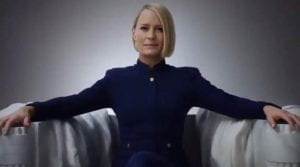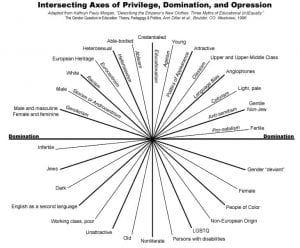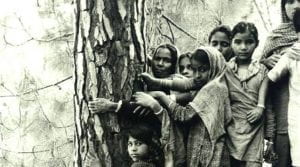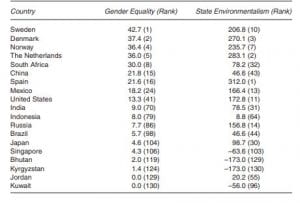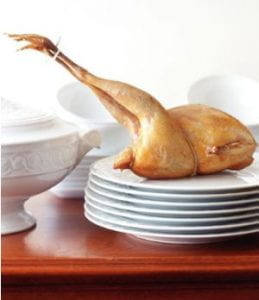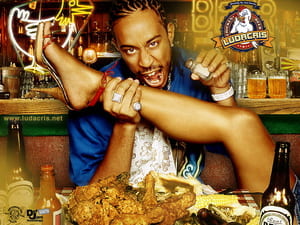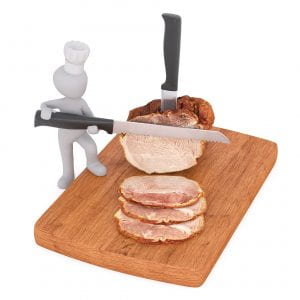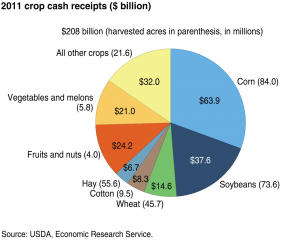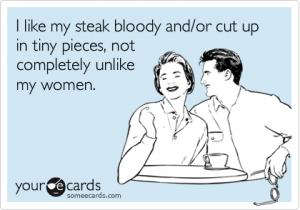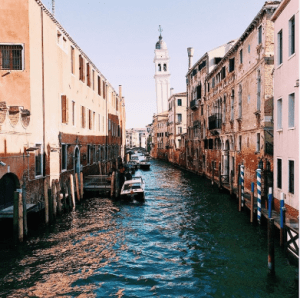Analysis project conduct at the end of the semester.
Praxis pt. 2
*Spoilers*
To preface this post I’d just like to point out that I think that if Kevin Spacey was not involved in certain off-screen altercations that House of Cards may have continued to be able to grow in popularity. Potentially having more episodes and season, but the show lost a lot of its moment with the necessary firing of one of its main characters who could be considered the protagonist of the story, Frank Underwood Claire’s Husband.
When examining Claire’s character understanding her backstory is important, and how she becomes involved in the political game in the United States, eventually becoming the first woman president in this reality-based fictional world. She is born to a wealthy upper Texas family, whose father was a republican president who throughout the show is mention liking Frank. Her father helps fund Frank’s political fund his political start, who despite being on different sides of the political aisle most likely saw things very similarly or at least mutual understanding of the world. Claire and her mother’s relationships is strained, based on competition for her father’s limited attention, that would be amplified by the marrying of Frank. Claire’s mother judges Frank harshly throughout the show, based on his conniving characteristics and his ability to gain the trust of Claire’s father. Throughout the show, Frank admits that he felt that he did not deserve Claire, this is because his love is very deep for her, but deeply rooted in the fact that without meeting Claire and gaining her father as an ally he would not have ever gotten this far. Claire is Franks rock, helping him make decisions, establishing herself as an equal to her husband even when he becomes the president. When she enters politics she has no background other than her work for a non-profit which she started and was considered very successful in its endeavors. During her time their Frank is moving up the political ladder, closer to the presidency, she continues to open her political network.
To characterize Claire fans would use words like, cold-hearted, calculated, determined, capable, influential, smart, and assertive. She uses any ounce of political leverage to help her in achieving her goals. But in the world she is attempting to break through in she is often looked down upon for being a woman, like many other women is throughout the show. Claire uses the fact the people often overlook her to take advantage of them to use them, her action often is vindictive. But to succeed in a world that will not put her on an equal playing field she must use her skills to her advantage, mimicking actions that often displayed male oppressors. She manipulates their thinking and action to fit her own agenda moving forward.
The true story of House of Cards is Claire’s ability to manipulate, and take charge of her plan of action. Becoming a woman in politics can be extremely difficult starting out, being forced to overcome stereotypes and societal constructions to break through into a position of power. There are very few women already in politics compared to men, leaving them with less initial allies. The Underwoods in the show are made the project a political power couple attempting to leave their mark in Washington, similar to names like the Clintons. In the beginning, Claire was forced to stand behind Frank as he campaigned his way into minority WHIP, then vice-president, to the president of the United States. Claire who was born in 1965, watched as females became more prominent in politics, but with difficulty, although as the years of her progressed the difficulty was perhaps lessened. Later in the show, it is revealed that getting Claire into politics was apart of the twos plan all along, as well as an initial relationship agreement to reassess the relationship every 7 years. Although, the two parties grow a deep affection for one another, and would be willing to work through issues but operate as two individuals. Before coming members of the public eye, they had a fairly open relationship, with both parties being characterized by at least being closeted bi-sexuals. This speaks to the non-ownership that existed between Frank and Claire, how they were both able to be partners capable of making individual actions. Claire displays strength, and demands the same from her husband, not allowing him to accept defeat or be unapologetic.
She is the biggest driving force in Frank’s life. From what is unseen in the show their early material and political years despite not being in politics she was still involved in the process of getting Frank elected, with her knowledge, money, seduction, and manipulation. She played her part as the wife because she knew it to be easier to launch herself into a position of power by catapulting herself from Frank’s career. This way she could operate outside the parameters of the political ladder, that is far more oppressive and critical, than the more private social ladder. She used Franks career to gain political networks and favors to support her non-profits, and eventually into her completely own political career.
If House of Cards was a literal title, Claire would be the queen middle on the bottom, supporting the entire tower that is Frank and Claire’s legacy. Based on how the show develops assumptions could be made about the two entire relationships, the first triangle in the house. Both coveting power, both with knowledge on the systems at hand, the game of politics, and the role of public perception. They use each other to display an entirely different facade, one lie or deception on top of another, building there a way to the top of the ladder. When examing Claire’s whole character she does not trust easily because of sexual violence in her past and admires strongmen ambitious men like her father, who may not always have excessive or desire time for her. Her true desire is not to love, family, motherhood, or activism, it is the climb as far as she possibly can to conquer the quest of dominance and power. This could stem from growing up independent and smart wanting more for herself than what the world is willing to offer. She is from a wealthy family and could do anything she’d like, but chooses this conquest of dominance over a world that looks down upon her. These facts led me to a conclusion about the original conception of the two’s marriage, they most likely did fancy each other but Claire was looking for a suitor who could raise her up not hold her back. Frank not only thought highly of Claire but desired power as well, needing money to launch a political career. Claire seeing a lot of her father in Frank, headstrong, ambitious, stern, was attractive to him for not only his present self but his potential. The real decision to get married was Claire’s to use Frank as a partner, push him to great heights, and assimilate herself into life. Without Claire the tower falls, she holds the underlying power that takes the whole metaphorical card building of lies they have built together by removing herself.
Her character discusses many feminist issues throughout the show like women’s rights, gay rights, sexual abuse, abortion, sexism, objectification of the female form. She presents a strong female lead who is not a secondary character but rather a protagonist herself in the story of legacy, more important than Frank who receives much more screen time, especially initially. But as I watched the show you could see Claire’s involvement more and more clearly, her prominence is understated, and it could be that the initial extended storyboard or idea for House of Cards never intended for Claire to be a supporting character. Her role is far too important, and she is quite clear and consense of what she wants, how to when she has to be. She is fighting her battles with oppressive systems when she needs to, but never allows a man to control her what she believes to be her destiny. The story is not of a man who becomes president despiting coming from a rural town in South Carolina, but of a woman who chose a man to elevate herself past the oppressive systems in front of her. Despite the system being against her she rose above every opportunity, setting an example and leading a whole other generation of women to reach their full potential. To not be stunted by the weights of society, or the hand of a man, but to lead herself into the future by her own heels.
As a side note, because of Claire’s powerful performance and the concept of her being not only equal in the marriage but as a character as a whole, even surpassing Frank when it comes to doing what she had to do. The actress Robin Wright who played Claire Following season 4, felt that Claire Underwood was the equal of Frank Underwood and demanded equal pay for her performance. A great example of how the artwork of society has reflection onto its realities, and a perfect opportunity for Wright to help build precedence for future female in regard to equal pay.
I think my plan was very effective, opening my eyes to a different world by using a piece of well thought out and developed work to express issues and themes. Claire’s character is enlightening to the struggles women go through in the pursuit of leadership roles, power, and just everyday society. By looking at the show through a feminist lens I was able to identify problems that I may have not done so before, expanding my own realm thought and perception. It is something I’d like to do with more shows moving forward, and hopefully through a lens and into deeper more complex issues or ideas.
Praxis
During this time of quarantine, it has left me a lot of time to think, ponder, and examine that I usually do not get to during these months. A lot of what activism is, is being able to identify the need and fault in the world. During the quarantine, it has also given me an extraordinary amount of time to plow through a list of movies, podcasts, and tv shows. I decided on my activism project to combine these two activities, by doing a character analysis of Claire Underwood from House of Cards.
My plan is to complete the show in the coming weeks, going back reviewing key plot detail, situations, and interactions. Examing the role actress Robin Wright plays throughout the show as not only a wife and first lady but a scholar, political activist, a force in the universe she exists. Another factor that I intend to highlight is my initial thought of her character as opposed to the end, the jump from a secondary character to the focal point, or to address if she was ever even the secondary character at all. Other possible things to examine are the universe she exists in, although based in a modern fictional universe is still exaggerated for dramatic purposes. How her character must emerge, fight, keep balance, and how these depictions in the show reflect back onto society. Personally, I think all forms of art directly reflect back onto society and what groups of people view it. Claire is a strong female, initially taking a back seat to her husband for many years, but she is rational, capable, and makes decisions for herself. Examing the character allows me the unique opportunity to direct a character that shows massive forms of growth, in a show the depicts how ruthless society, politics, governments, marriage, relationships, and just generally people can be. She is a direct reflection of the modern woman, and the show generally uses topical issues to move the plot along. I will use the opportunity to examine our society, show crafting, character development, and the piece of art that is House of Cards.
Intersectionality
“Life on Earth is an interconnected web, not a hierarchy. There is no natural hierarchy; human hierarchy is projected onto nature and then used to justify social domination. Therefore, ecofeminist theory seeks to show the connections between all forms of domination, including the domination of nonhuman nature, and ecofeminist practice is necessarily antihierarchical.” (King, 1989)
The ecofeminist intersectionality perspective I believe most simply broken down in the quote above. The prefix in the word is eco or an environment, translated from the Latin oceo or household. Thus you have ecology, the study of environmental connection, and how animals interacted with each other and the environment around them. The idea of intersectionality is that we are all interacting with one another, our social spaces come in and out, we move from groups historically majorly oppressed groups to groups that may have benefitted or been the oppressor, constantly being connected and brought together by society; but we are also connected to nature, more so than we are to the social structures that we create. A true ecofeminist believes that not only due we have a connection but a duty to nature, to care for our planet even at the downsizing of human society. I think the idea of the interconnection of species is very nicely summarized by Mufasa in The Lion King:
“Everything you see exists together in a delicate balance. As king, you need to understand that balance and respect all the creatures, from the crawling ant to the leaping antelope…When we die, our bodies become the grass, and the antelope eat the grass. And so we are all connected in the great Circle of Life.”
We must think about ourselves as not humans as us against nature, against the wild but rather as one with nature and apart of it. We must realize that when we die, life goes on when we must not take more from the Earth than what will be left for the next person circle and so on. We rely on the Earth to provide the air we breathe, the food we grow, the animals we eat, the land we build not just houses but homes on, the views we take in, and the adventures we seek. Life as we know it can not go on without a habitable planet with food, water, and oxygen; life existence in a balance, and when you throw the balance off, the repercussion can be drastic. The ecofeminist ideology believes that we are all connected, and all to nature, that to build long-lasting survival, we must take care of one not only one another but nature as well, and each will repay the favor.
The other part of intersectionality is what is known as the intersectionality Axes of Privilege, Domination, and Oppression, depicted below.
This web describes how people can go from social, class, group, majority, sect, whatever, as quickly as taking a step or interacting with various people. At the same time, the web sets the line of those who are oppressed or live in dominant groups, to those who do not. Although it does slightly contradict the true ecofeminist view regarding intersectionality, because of the idea that human hierarchy does not or should no matter, we should live in a way that respects nature and the life created on this planet. So in pure ecofeminist eyes, the web should not even have to exist because we should be looking out for one another and the Earth. But the idea of the web is that for ecofeminist to want to end sexism may not be enough, because the oppression will continue to other impact groups in our society. Being that we are all connected, we cannot truly thrive until we all succeed, if sexism end and things like classism, homophobia, transphobia, then social injustice still exists and ecofeminism still serves a purpose.
Activism
As mentioned numerous times throughout these blog post the relationship between the oppression of both women and nature can be found to have a strong correlation. But for those who have taken a statistics class know that correlation does not mean causation. Meaning that just because one group is being oppressed does not mean that this is the cause of the other being oppressed. I think the relationship between the two oppressed stems much further than just women and nature, but all people in these marginalized groups. For instance, when reading about the village of Recife, whos poor literally swim in a sea of garbage, the problem here is one of narrow mindedness and lack of empathy. The first problem begins at what is culturally accepted norms in Brazil, a canal filled with garbage indicates that society has very little concern over care for other living species, living in an individualistic mindset. The people who pollute the most are the once that can afford to, or are in control of some sort of production of goods where the firm’s main goal is profit maximization. For me, it is very hard to blame the firm entirely for the garbage disasters in Recife, or in other instances of polluting. Yes, they are very responsible for doing what they do, especially if it is done in such a way that it is done in a deceiving, secretive way. Often times, when companies pollute as they do, it is because of lax government regulation or worse lack of intervention and prosection. The firm simply exists to produce a product and make as much profit as possible, employing people and generally improving lives even if it is at a marginal rate. The other problem is the cultural acceptance to allow littering a polluting, this stems from a lack of cultural awareness of what is taking place or care for that matter, many individuals looking out for themselves instead of the nation as a whole. This way of thought is justifiable in some aspects as well, after all, if one does not look after themselves and those close to them it is highly unlikely that someone else will. They look out for only themselves and have little regard for the harm they may leave behind, never looking back to see who has to swim in their trash. Some may ask why don’t those who are forced to swim in the filth just clean it up and give themselves a clean space? The same attitude applies as before, they are forced to focus solely on themselves and their close ones. Being impoverished gives these people even less opportunity, money, and time to make substantial changes in their lives or environment. The people that live in the slums of Brazil, African villages, or other poor rural areas are mainly focused on one thing, survival, eating as many days and meals as possible, drinking clean water, keeping themselves warm and protect. Where they stand they have to be so focused on the simple aspects of survival they have little time or excess resources to partake in a large community and environmental changes. At the same time for those living in the garbage they absolutely don’t wish to live like they, but they are too poor to move, little resources for massive cleanups, and feel as if they should not be responsible for cleaning the mess made by other all of which are valid reasons.
So how do groups like the village outside of Recife improve their lives? For one being raised in America, the thought of the purpose of government should be to represent the opinion of the majority of the country, while protecting the rights of the minority. The government should recognize the risk that they are putting their own countrymen at, a situation such as these are great displays of the first problem associated with the government. Without even looking into the laws or current political climate of Brazil it is clear that there is a problem, either they do not have laws in place to prevent frivolous polluting or they simply do not care when it happens. This lack of concern or jurisdiction can be a factor of many problems, corruption being one of the larger reason corporations are often allowed to proceed with heinous acts like massive pollution. This lack of representation often puts those who are in the minority at risk, but not necessarily in harm’s way until the people in charge allow things to happen to them. This disconcern demonstrates the lack of empathy amongst not only Brazilians but more times than not all over the world progressive and advanced countries included, as stuff like this still happens in some of the richest most political level countries on Earth. The oppression of women and nature are rooted in similar issues, people lack empathy for others, even when groups gather together for righteousness many times they are only looking at their own opinion, reasoning, facts, and group. The government or culture is unaccepting of change and progression, the lack of women representation in government is not the reason why governments allow for the degradation of environmental structure but rather the government’s inability to accept new ideas, people, and ideas that may disrupt their current course or agendas.
What really got my attention was the article about The Chipko movement. What I gained about reading this is the ability for the citizens to gain the government’s attention and the increased level of empathy for neighbors and the general environment. They realized the importance of the forest area that surrounded them and were thought that increased commercial activity in the area although spawning economic growth could lead to the destruction of the beautiful country. Some fo the reason why the movement was successful was because of the ability of the people to come together and think about one another, even if they weren’t directly going to be impacted. The other factor was the ability of the government to not only accept changes, but also put aside potential personal gains, and put the protection of what may be considered a minority first. The government heard the concerns of its citizens and put their need for protection over the profit of the industry. People were willing to put themselves at risk to protect what they believed to benefit many not only themselves, and due to a responsive government change in policy was possible.
*Chipko women standing together, in front of a forest in a demonstration to protect it from degradation*.
This same kind of idea is possible in African countries if they listen to those who are actually in the field and become accepting of ideas that may not have come from their own group or against the societal norm. “Throughout Africa (as in much of the world) women hold primary responsibility for tilling the fields, deciding what to plant, nurturing the crops, and harvesting the food. They are the first to become aware of environmental damage that harms agricultural production: if the well goes dry, they are the ones concerned about finding new sources of water and those who must walk long distances to fetch it.” (Maathai). These are the people that have direct access to what is going on in their everyday environment long before impact become so devasting that it kills a large portion of people. The importance of group thinking, and coming together is exemplified in these movements, but can often fall short if the government is so corrupted or unresponsive that nothing is done. Without proper representation for people from different sects of life, the issues are often left by the wayside, and ideas are missed. Although it is not these women’s job to clean the environment or be political activist, the best way to protect themselves and their futures is to come together, standing as one to help make clear what they are standing for, not backing down at the first sign of adversity, and the government actually listening and coming to the aid of unjustly impacted by whatever problem they may be facing.
State/Government
Norgaard and York found that there was a correlation between nations that tended to be more favorable to women in society and government, also tended to be environmentally conscious. “We reviewed a number of compelling theoretical reasons to expect that nations, where women have greater political power, will be more inclined toward supporting environmental protection.” (Norgaard and York, 519). They concluded that when women are more involved in the government the government tended to take a stance that protected the environment from continual degradation. Norgaard and York concluded that is the world was to fight the war on climate that women should become a more integrated part of the government, “These results suggest that theories of gender can contribute to both our understanding of state behavior and the relationship between society and the natural environment”(519). Their suggestion center around the idea that women tend to be more pro-environmental, more likely to participate socially, disproportionately suffer from environmental degradation, and that the resolutions of both sexism and environmental downfall are linked and can benefit from one another.
Although I believe there is a lot of individual validity in their statements, for example, I believe women are a vital part of not only society but government affairs, as well that I believe in protection for the environment. Where the two lose me is the causation between the two. I think the difference is masked by the overall changing times and progression. For the most part, if you look at countries on the forefront of fighting climate change tend to be on the more post-industrial age of their economies, more progressive in their beliefs, and more accepting of change in the current world. For the most part, just by using the chart provided in the article placed below, the countries who have some of the highest environmentalism levels are also some of the most progressive ideological nations in the world, with cultures that reflect a respect for others and lives. These countries tend not only to respect women and place them at a higher level than most other nations but generally are accepting of other cultures, peoples, changes in ideas, and in some have a strong more significant culture associated with the environment. I think the correlation between women being in government and the increased environmentalism has to do with the countries willingness as a whole to accept new, changing ideas, that are seen as progressive; and as more people are able to participate in government more ideas are shared and collaborated with. When more people and brainpower is being used toward the goal of running a country it is less likely for individuals to take advantage of their positions and for new ideas to be expressed and discovered for the countries’ use. This increase of participation, thus brain power, combined with the countries’ acceptance to change in ideals and generally ideology gives these countries an advantage when looking between the correlation between women and environmentalism.
The other point that troubles me with this data is how in some cases how contradictory it is when looking at countries like China. Where women have very little government roles, despite being high in gender equality they are very low in environmentalism. Or when you examine the highest-ranking environmentalism country, Spain, where gender equality is outside the top 15 in the world, or Jordan whose environmentalism is ranked 55th but has almost no gender quality. I think although there may be truth in the idea that countries with higher gender equality may be a shift more towards an environmentalist agenda, but I think to say that just because women are involved in the government and treated more equally does not mean that that is the driving force for why these countries act as they do. I think a larger role can be shown with a thing like GDP which indicates that when increased to a level above 5,000$ per capita that people generally begin to show more concern for their own and environmental health.”Environmental degradation overall (combined resource depletion and pollution) is
worse at levels of income per capita under $1,000. Between $1,000 and $3,000, both the economy and environmental degradation undergo dramatic structural change from rural to urban, from agricultural to industrial. A second structural transformation begins to take place as countries surpass a per capita income of $10,000 and begin to shift from energy-intensive heavy industry into services and information-technology intensive industry” [Panayotou (P), 1993, page 14]. (Ekins, 1)
The first article I picked was for a woman that I have been following politically recently, Alexandria Ocasio-Cortez of New York. One of the main reasons I have a lot of political respect and follow representative Cortez was her willingness to stand up for an issue that is often overlooked and mispresented. Some may even call the green party as political suicide because if the ramification or are even thought to have led to an economic slowing the politician is often quickly cast out, especially one as young as herself. She was willing to stand up for the issue she believed in and make a push for an idea that is often shunned or rarely politically fought hard for. She not only fought hard for the Green New Deal, was but continued to fight, raise awareness on the issue, and add to her political supporters in the issue. She was willing to do a lot of the work that many others were not, risking her political career to do so. She represents the idea that as women come up in terms of their role in society they will continually raise the issue of environmental protection, that York and Norgaard expressed.
(the picture below is a nytimes articles, that should be hyperlinked to the picture, if not https://www.nytimes.com/2019/02/21/climate/green-new-deal-questions-answers.html?ref=oembed )
https://www.nytimes.com/2019/02/21/climate/green-new-deal-questions-answers.html
The next lady I bring up is Greta Thurberg, I decided not to attach an exact article but rather just use her journey in general to emphasis my point. She is the next step in ecofeminism, with the push for women to not only voice their opinion but for it to be heard, focused on, examined, utilized, and worked with. She continually voices her objections for the lack of environmental integrity we have as a species, believing we are living far beyond our means. Without young women like her, there would be no future for the party or people to engage with younger audiences, who are often the most concerned with climate change and global warming.
The other reason I decided to use Greta is to bring up her opposition, another young female named Naomi Seibt, dubbed with anti-Greta. She has used the same platforms to voice an opposing viewpoint on the subject, that more often times than not contradicts Greta. Naomi brings up the point of the utilization of petroleum in more aspect in our lives than we realize, and the general viewpoints of the opposition. What strikes me about this is, and other women in political power for often opposed environmental actions, for example, Sarah Palin. The idea that I think should be expressed even more is that women should be able to make their own opinions and formulate their own thought, then express them however they see fit. I think the more important issues to focus on is allowing all people to express their ideas, study what they wish, and how they wish. The more information that is out there, and available the more people are able to learn about the issues at hand. I think what holds environmentalism back the most, is not that men are often the ones in power because many women come to the same anti-environmentalism that many men come to, but rather a particular nations ability to accept change, the difference in opinion, and the fact their first notions or intuitions may be wrong.
A couple of quotes and figures, from Female Labor, Western Culture and Growth in the Gulf Cooperation Council Countries.
Witte, Mark David. “Female Labor, Western Culture and Growth in the Gulf Cooperation Council Countries.” Review of Middle East Economics and Finance, vol. 7, no. 1, Apr. 2011. EBSCOhost, doi:http://www.degruyter.com/view/j/rmeef.
“Moreover, a 1 percent increase in the female percentage of total labor creates GDP growth equivalent to a 2 percent increase in the international price of oil.”
“the paper finds a positive relationship between the female percentage of total labor and per capita U.S. book expenditures.”
I Chose this article to represent the picture because it shows that women of the world cannot be ignored, and for many countries pose an extremely viable form of labor and capital. The more people working on ideas that better the country the better the country. Women come with a different viewpoint and perspective, offering ideas and ways to work that many men don’t think of. They also represent 50% of the total population, which is a significant market share and opportunity for growth among nations.
Bodies
Where does life begin? An enduring question that has riddled not the only philosophical community, and followers of certain religions, but now everyday man. A question that fuels the debate on whether or not abortion should be legal is one that has sparked commotion throughout our country. Some believe that life begins at first breath, others at conception, and others at different stages of pregnancy, the argument for whether or not abortion should be legal and when is centered around the question. Where does life begin? Beginning with a look at the actual anatomy of a fetus throughout pregnancy and see exactly what happens and when. Major points in the baby’s development, key parts of pregnancy as a whole, focused around the life of the fetus, including potential risks to mothers. An introduction into some religions and philosophies on how people view human life and where it may begin for the followers of these sects is important to understand both sides of the argument. For example, dealing with ideas of fate, predetermined destiny, existentialism; opposed to atheists and someone who follows a stricter view of science and being. Even within the scientific community, it is argued when life is truly life if it is justifiable to say that a human that was never capable of breathing on its own can even be considered living. The issue is continually debated, the timeline for what we understand about birth and when we are able to bring children who are able to survive continues to change with advancements in medical knowledge and technology. I think this illustrates the crossroads of these issues, is that how can one confidently say when a life begins. The topic of abortion is fought on multiple fronts, first if it should even be allowed, next when life actually becomes life, and third when the latest someone should be allowed to abort and if it justifiably murder. I think when debating this issue oftentimes fundamental ideologies become an issue, often leading the argument down a road of what one believes to be true. The real issue with abortion to me is that outlawing it fundamentally goes against people’s personal freedoms and sovereignty, which in the U.S is an issue that has and will be argued upon forever. The general community cannot come to a consensus about when exactly a human life begins, therefore arguing either side for if abortion should be legal becomes pointless because of the lack of fundamental agreement. Whether or not a woman should get an abortion is a personal and family matter, and the right to make decisions for oneself should be held to a higher standard than personal values. I think moving forward the most appropriate way of dealing with the issue is to give people the opportunity to do what they wish without potentially harming another person. Meaning that if the fetus is capable of living at least somewhat on its own the opportunity should be present for the woman to have the child and be able to give it up for another family to cherish and enjoy. But this opportunity should not infringe on a woman’s and families’ right to choose the best outcome for themselves, we must maintain people’s personal rights to believe and practice what they wish.
As an ecofeminist, the argument over the matter of aborotion is an argument about personal liberties, and the fight against the systematic oppression of females in history. The particular case Roe V. Wade in the United States put the matter of decision to the individual woman’s hands, given the authority to end life before it takes its first breath. Roe V. Wade was crucial in the transition for women to take control of their own physical selves, that were so often abused by men for sexual and visual pleasure. But the battle is two-fold, in literary terms, it is a battle of self v. society, and then a battle self v. self. Before women could even begin to truly begin to understand the complete complexity of abortion, and explore the topic as a group openly and honestly. Women first had to establish in society the rights of a woman’s body to be of her own, making decisions independently of male control. Personally, I feel that it is very possible in the next 50-100 year legislation to be something that is completely controlled by women on the matter. This could have political and social repercussions as well, but it is a viewpoint many women strongly agree with and would politically advocate for. The other battle though is a self versus self one, where a woman must ,under no societal controls, make the decision to not have a child. This is an issue that is very emotionally involved, and a moral dilemma that takes into account every factor of life present and future. Hawkins argues that under the true ecofeminist perspective that being pro-abortion is being anti-feminst, because the value one is supposed to hold on life. Even though potential overpopulation threats global welfare, the killing of another living being is against true ecofeminist ethics.
Although, I do agree under the perspective of true ecofeminism, like being a vegetarian, abortion violates their ethical code. But my personel feeling on abortion is that there are many circumstances why a women, or couple may need or want an abortion. To be quite frank, many people may not be fit to be parents at that stage in their life. The likelihood of a child being raised in a stable home, with parent(s) financially and emotionally being able to take care of them only increases with age and maturity. This is not to say young parents cannot, but many are still developing emotionally themselves, and have done little in career progression. These are things that contribute to greater social issues that people refer to as cycles; a young parent has a child that is born into poverty in a home that is most likely unstable if in a position where the parents live on their own, or under supervised. The parent(s) themselves has a lot less life experience and knowledge to properly care for the child in all aspects of life, therefore the child could develop emotional gaps or stunts, skewed visions of life. Raising a child is extremely stressful, this combined with stress of life can be overwhelming and difficult to deal with, sometimes resulting in parents abandoning children. These scenarios take an emotional toll on a child which can result from them making similar mistakes as their parents, because that is what they know. I feel that if parents or a woman does not feel they want a child, or properly care for it they should not be forced to do so. It is traumatic enough to go through with an event I imagine, making it more difficult, or illegal should not be another issue to be dealt with.
Women-Nature Association
One of the major ideas that stuck out to me with this section especially with Adams interview as the quote, “Women are animalized and animals are sexualized and feminized. ” (13). Here we have a piece of chicken sitting on a plate. But the display of the meat is with its legs up in the air, strung up, with its rear hanging out in the open. The pose of the chicken reminds me that of something that would be displayed in an adult magazine full of women. I feel as if the two mirror each other in ways beyond just posing. We idolize, romanticize, an over sexualized both women and meat, we have a desire for it to look sexy and eye appealing. We treat another body and another life as an object that we should and do consume. Adams quotes, “Meat is like pornography: before it was someone’s fun, it was someone’s life.”. In order for people to enjoy meat or enjoy pornography, it has to come something else. Although, this is not entirely always a true or fair comparison because there are women who make a full choice to be in magazines and want to display their bodies openly in the nude. But this is always an expectation that society puts upon women for men to enjoy. Men want to enjoy women on a platter, in her bare skin, ass out, legs up, with no arms for defense or face to speak, just like in the photo above. If this was an advertisement it speaks to all of the meat-eater as being a sexy display of food, but also subconsciously reminds us of the woman on the platter for men.
This is an example of an actual advertisement that over sexualizes animals, and objectify women in a sense. This promotion for a tattoo and barbecue themed festival used to promote the event to a certain crowd, people interested in tattoos and meat. But the advertisement does this in a way that doesn’t exemplify how great the food will be, how well done tattoos artists are, how fun the event will be, it instead uses a picture of a female pig given female human characteristics. The pig is given a large rear in a rather skimpy thong, giving the viewer a seducing wink, covered head to toe in tattoos. The pig is made to look like a sexy as possible according to society’s standard to attract males. The advertising objectifies women, subtle saying that this is the way you should dress and look when coming to the event. The pig is also serving food on a platter to the viewer, another way of subtly implying that this is a woman’s place; to look attractive in skimpy clothes while serving food. Men and advertising firms continually project these ideas of women should be. This projection makes women feel as if they don’t have a large ass hanging out of their underwear and serving men food then they are not good enough, or up to men standards.
This last image, and personally my favorite from the gallery. Why this image is my favorite is because of the humor involved in it, it is the rapper Ludicrous sitting in front of a larger plate of wings, with hot size, seasonings, and fries. Why this picture is funny to me is just the overall ridiculousness of the image and absurdity of the shot. But the picture does still holds true to some of the ideas that relate the way we as a society view women and animals. Relating back to the first image, like mentioned before “Men want to enjoy women on a platter, in her bare skin, ass out, legs up, with no arms for defense or face to speak” we notice that there is no concern or sight of the women’s other bodies parts just her bare leg. The rapper is salting the leg as if to consume it, this could be taken in several lights. If you wanted to take it from Ludicrous artistically point, it could be seen as a double entendre or innuendo as to say he wants to consume her, a euphemism for a sexual act. When we look at the image through the ecofeminist perspective we see it as a way to objectify the women using her body, with a comparison to what many consider to be delicious fried chicken. The image projects an idea that women are meant for nothing but man’s consumption, she is meant to give herself up, and be added to (the salt) by men. She is nothing more than her body, made to feed man’s sexual appetite. It also projects this idea that this is how women’s legs should look, shaven, skinny, nice looking, bare, with a nice pair of heels. I believe this is an add for a brand of chicken wings, using a celebrity to help sell their brand. They uses the image to help increase their brand identity, using sex, fame, and womanizing culture to aid in the sales of chicken to mainly men, in this case mostly likely African-American men by using a black artist to sell an stereotypical image to society.
This final image was a recent ad made by Burger King that received a lot of backlash from consumers. The ad uses sexual references to help build their following and get people to try their new sandwich. This image again reinforces the idea that women are related to two purposes only for food and for sexual activities. Burger King in the add suggests that women are designed to service men, and that their sandwich will make you feel as if you are receiving a sexual favor from a beautiful woman. The image also enforces the idea that women are supposed to wear make up even when eating which can pose many problems especially eating a sandwich like the one presented. In general women have been and are constantly over sexualized in all form of media they are constantly seen as nothing more than just objects with no feelings, similarly to how people view animals as simply food and not like living things. The objectification can be seen as a way for society to systematically oppress women in such as way that they cater to men, remain sexual entities, and can do little to rise above this level of being.
Vegetarianism Ecofeminism
This image speaks volumes on how humans view animals and their diets. For me, I see a singular human entity cooking food for who I presume is himself. Although he is not very big, he is cutting himself many portions of strict meat to feed himself. There is no other food or people present; he has prepared the meal and will eat it all by himself. But instead of proper proportioning, and balancing it with other food groups, he eats a whole large meal of just meat. Western diets especially have begun to become extremely processed food-based and meat-centric. Usually, the center point of the dish is the meat and meat are served at almost every meal. I think the reasoning behind making the image above such a focal point of the lesson is demonstration two things found in western cultures; first, this idea off meat being the center point of diets and two the overindulgence that reoccurs in our culture. In many other countries, the vegetables, fruits, starches, leafy greens, various carbohydrates make up the large portion of the meal with a smaller serving of meat to complement.
Looking at this image below shows how much Americans and other westerns are moving away from vegetables and other foods are grown from the ground and towards more processed and meat-based diets. Fruits and vegetables make up a very underwhelming portion of the diet compared to meats eggs and nuts, and this image also raises a lot of concerns about the number of processed sugars, added fats, and types of gains (bleach flour is often considered unhealthy) we consume. Most of these are not only negatively impact our bodies and metabolisms, but the way they harvest can also have a negative implication on the environment as well. Excess livestock, who are often overfed gain and corn seed to fatten them up for consumption, can be extremely detrimental for the environment because of the amount of water used to raise them and the methane gas released into the air from them is a natural greenhouse gas. The problem with the food we provided of them being mainly grain and cornmeal is how we produce the plants for not only the animals but ourselves as well. Extensive mono-cropping agriculture persists in the US and is a source of land degradation, overuse of pesticides, fertilizer, and water, a decrease in biodiversity. We have wiped out a large portion of natural wilderness for cash crops, large areas of monocropping, and cattle raising.
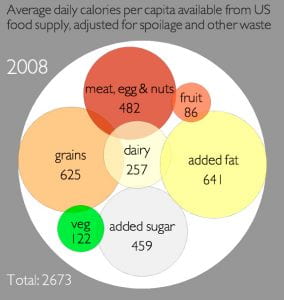
Philpott, Tom. “The American Diet in One Chart, with Lots of Fats and Sugars.” Grist, Grist, 6 Apr. 2011, grist.org/industrial-agriculture/2011-04-05-american-diet-one-chart-lots-of-fats-sugars/.
The image from this lesson shows several factors that are important to the ecofeminist movement. First, how the way we are eating now is not only unsustainable but bad for the environment. We are abusing the land, which is a significant negative for any green party affiliate. Second, the dominating and oppressing nature in which we interact with our livestock is often thought of as inhuman and is dominating in nature. This oppression directly contradicts most of the ecofeminist ideals. Third, the general overindulgence of our eating habits in America shows the lack of care we have for not only the environment but our fellow man, with many people in our own country underfeed while we overfill plates daily. Lastly, the idea of practicing a well-balanced, non-harming, healthier lifestyle seems to follow suit with many ecofeminist ideas, which I believe is a message this image could be conveying.
I believe that a lot of this idea of gendered food stems originally from the days where men would hunt for meals, meat was harder to come by and dangerous to get. But we have moved away from that idea a long time ago, in today’s society it is misconception often perpetuated by mass media and uninformed individuals, Zoe Eisenberg states ““Backed up by the entertainment industry is the idea that the bloodier the steak, the more manly the man, the same way it once was with the man smoking cigarettes.” A lifelong vegan (meaning his parents raised him that way), Howell says he has never felt his manhood was under siege when others learn he eats no meat—other than the typical scrutinization he gets for being vegan in general.”. Many industries and people believed that eating meat made you stronger and more mainly. There was some evidence to support the matter if you thought of eating meat for protein to build muscle, something more “manly” men had. While eating meat can be a source of protein, a part of a balanced diet, it is something both men and women need and can be obtained from various nonanimal products. For a long time, culture pushed men to be more aggressive, violent, demanding, and ruthless. A man survived in a kill or be killed world, and nothing quite showed victory like eating a kill. This stereotype of an expectation of aggression and violence in men is continually pushed throughout much of human history. Where we land today, in modern society where hunting is an almost obsolete skill, our knowledge of the human diet has made leaps and bounds, our understanding of men and women, a shift in the need for both genders, and an overall change in culture and the way we live our everyday life. But men are still being pitched the same stereotype, the idea of eating another animal that has been conquered by man is not only the best and only way to get protein but is a masculine thing to do. All of which has not been shown to be true, but the idea is constantly portrayed in our everyday culture, perpetuated by misinformation, and halted by society’s scrutiny of anything different and or progressive that slows the rate at which people attempt to change. Men feel a sense of subconscious pleasure from eating the flesh of another animal, a connection to evolutionary roots, a connection to the need to oppress and feel like a dominant hunter.
A similar pattern and idea can be recognized in societal pressure for women to eat salads. First, women primarily began as gathers of fruits and vegetables, and have been traditionally known for being closure to nature. But the societal pressure I believe build from two stereotypes pushed in modern media women are weak and dainty, like a leafy green therefore should eat like such. The other is that all women must be skinny and thing, which is associated with eating salad. Salad can be an extremely healthy option for most people, but the idea of eating a salad is often projected as feminine. Women are attempted to look soft less menacing, like a salad, nothing has to be dominated and killed in order to obtain the meal. To be healthy and to be thin is to eat salads every day, to be thin is an expectation men force upon women, so to eat a salad is something women should do according to reason and modern society.
“One clear way of distinguishing the two approaches is that whereas the rights approach is not inherently contextual[1] (it is the response to the rights of all sentient beings), the caring-for approach responds to particular contexts and histories. It recognizes that the reasons for moral vegetarianism may differ by locale, by gender, as well as by class.” (Curitin, 1991). Ecofeminism is mainly supposed to encompass a level of respect for not only all people but the entire natural world. It is about having respect for thous neighbors and the birds’ overhead. The idea the vegetarianism is not only more human because no life form is killed in the process, but also because of the ecological benefits that a predominately vegetarian diet comes with. Curtin goes on to explain how the idea of moral veganism falls into the ecofeminists because of the moral obligation they feel to protect living things. They feel guilty about taking other things life away for their own personal gain, especially when they can thrive without it. Curtin explain how ecofeminists feel a sense of respect toward animals and killing them would completely go against that respect. But in another sense, there is a strong connection between vegetarianism and sustainable lifestyles. Since eating raised meat and livestock has a negative implication on the environment an ecofeminist, according to Curtin, would support the movement as well because if their moral obligation to the Earth. Gaard points out that eating meat and forcing livestock to live as they do is oppressive in itself. This is exactly the type of oppressive nature that ecofeminism aims to eliminate and counter, so eating meat would be supporting these industries that oppress.
Understanding Place
This is a picture I took while in Italy in the city of Venezia. This photo speaks to not only things that I am interested in, as well as a piece of family history, but also symbolic of life. These first two are fairly intervened, I grew up with an Italian family who had only recently immigrated to America as far back as my grandmother and her siblings. Italian heritage was a large portion of my youth and family dynamic. I was able to visit the county my junior year of high school, fascinated with the history built into the country. I remember taking tours and as they explained the newest building to us they would say things like “This is one of our newer churches built in the 1600’s”. This is so interesting to observe, especially as an American, living in and around Boston I have lived and visited some of the oldest portions of our country. These monuments and structures are dwarfed in age compared to even some of the newer structures built in Italy.
This scene in Venice helps bring together Williams’ idea of a bedrock of democracy as being pivotal to transportation, movement of supplies, bringing people together, and many other economic functions including tourism. Not only does this scene represent this idea of place, as the picture was taken on one of Venice’s many bridges, a very happening and centric place so of the city. Where culture, tourists, merchants, citizens, laborers, all walks of life converge, mingle, and go about the dance people call life. When examining the actual photo you see the life blood of Venice, the river ways, toured by Gondolas and small boats. These river ways allow people to move about the city with ease, transport goods, make people money, and connect one another. The river being literally attached to the street blends this idea of nature being a part of our everyday lives, something that can help us and is connected to us in a way. The water is right up against the buildings and cityscape, moving up and down, in and out with the tide. I agree with Kingsolves without need to integrate wilderness into our lives. A huge part about being human is our connection to the Earth, the environment is something we have learned to live with a be a part of. Much of it was destroyed but through different ways we were able to help rebuild natural habitats. Learning to live in harmony with the environment, using it for our human purposes but also allowing it to live in its more natural state. As humans we learn to become more codependent on the environment, using it, enjoying it, but also helping take care of it to make a better, more sustainable world. Since the environment holds some of the utmost importance for our species survival it should be at the forefront of policy making decisions, while at the same time policy makers should respect the basic constitutional rights that are involved when considering land use. Individuals should be allowed to own property and due what they want on it, but should be held to certain environmental and waste standards. We only view wilderness as untouched, but in truth everything we now inhabit used to also be a part of the wilderness, but through sheer force humans removed the wilderness part from our environments

